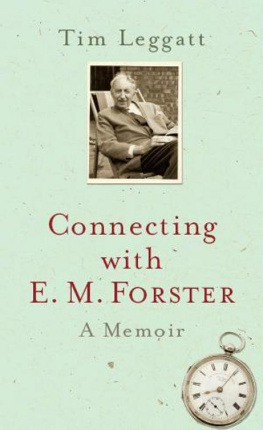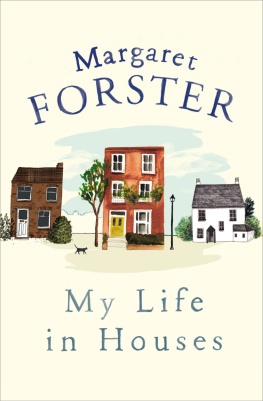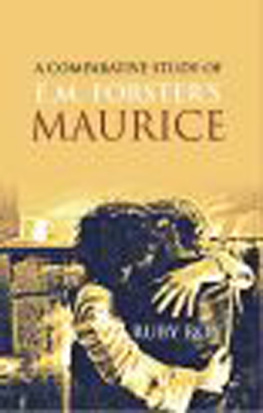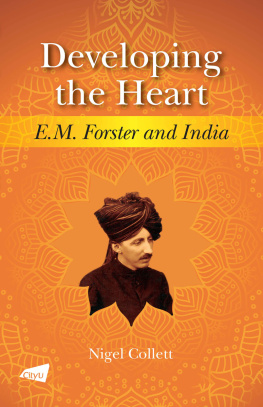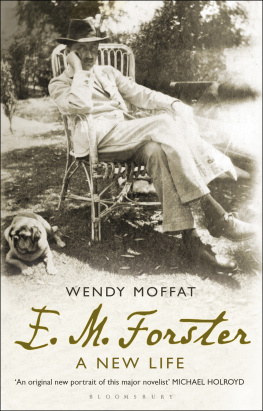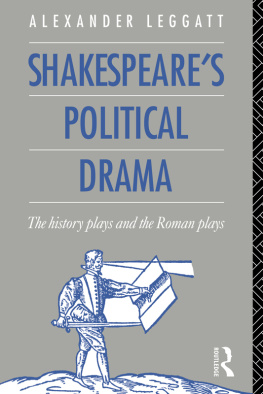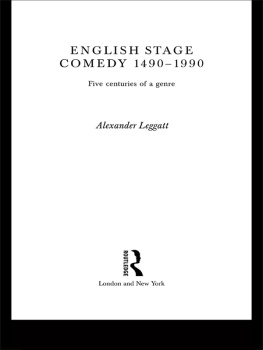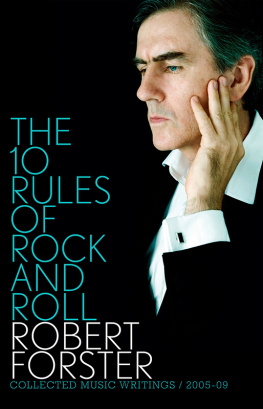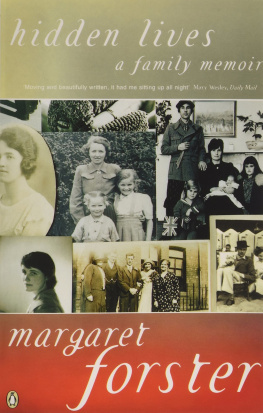I am grateful to Peter Jones, librarian of Kings College, Cambridge, for permission to quote from the Forster archives, held by the college; and especially to Patricia McGuire, archivist at Kings for her continuing help and encouragement.
My special thanks are due to Jonathan Miller and to my wife, Penny Smith, for their very constructive criticisms of my draft, which led to the memoir being both more focused and far better organised than it otherwise would have been. Responsibility for its final shape is of course entirely my own.
When I went up to Cambridge in 1954, Morgan Forster was Britains most distinguished writer. The only other great writers of the twentieth century were all dead: D.H. Lawrence had died in 1930, James Joyce and Virginia Woolf in 1941. Somerset Maugham, who lived until 1965, was a writer who had, and knew, his limits. Forster indeed had no rivals.
His output was admittedly unusual. He published five novels, of which his fifth and last, A Passage to India, appeared in 1924, when he was forty-five. He wrote his novel about homosexuals , Maurice, in 19134, but it was not published until after his death in 1971. Most of his short stories were published by 1928, although a further volume was published posthumously in 1972.
He wrote two biographies, of his friend and teacher Goldsworthy Lowes Dickinson in 1934, and of his aunt Marianne Thornton in 1956; and an Indian memoir, The Hill of Devi, in 1953. He shared with Eric Crozier the writing of the libretto for Benjamin Brittens Billy Budd in 1951.
He published a great many essays and reviews and made many broadcasts and speeches, often as a spokesman for the National Council of Civil Liberties and other liberal causes. He was president of the NCCL and also president of the Cambridge Humanists (from 1959 to 1970).
He was what he set out to be, a creative artist of great distinction .
However, he was not only an outstanding writer. He was also to those who took an interest in such things a significant homosexual. He had his first full relationship in Egypt in 1917 and there were many people in his circle and among his friends who were homosexuals: W.H. Auden, Benjamin Britten, Constantine Cavafy, Christopher Isherwood, John Maynard Keynes, T.E. Lawrence, Siegfried Sassoon, and Lytton Strachey. So too were his closest friends: Joe Ackerley, Bob Buckingham, American actors Tom Coley and Bill Roerick, William Plomer, Jack Sprott; and, in the last decade of his life, Mattei Radev. When I arrived at Kings, it was accepted throughout Cambridge that the college welcomed and contained many homosexuals , despite the fact that relations between consenting adults remained illegal until 1967.
And so it was that Morgan was not infrequently drawn to undergraduates through a homosexual interest, with the hope that a full relationship might develop. I was one of these, as were two other undergraduates mentioned in the following memoir, Brian Remnant and Lindsay Heather. Nothing came of these hopes. I was always firmly heterosexual and discussed such relationships more intimately with Morgan than with anyone else. My friend Jonathan Miller suggests that by virtue of me not being homosexual, Morgan was drawn to me more strongly than he would otherwise have been because I was inaccessible. He continued to have sexual feelings to a great age. Jonathan also believes that, to Morgan, I was a Cyril Fielding (as in A Passage to India), when I went to India, in a life that reminded him of Fieldings, and as a result was of special importance to him.
As he got older, he was much concerned with death, with how other people met theirs, and with how he would meet his. This too is evident in this memoir.
In my third year in Kings, 19567, I had rooms next to Morgans, where meetings of the Cambridge Apostles regularly took place, and I shared a bathroom with him. From that year my relationship with him was exceptionally close. It is something for which I will always be grateful.
I should note that I returned to Kings as a fellow, 197382. I was senior tutor of the college, 197381.
Connecting with E.M. Forster
A Memoir
Morgans mother died in March 1946, and he was asked to leave their house in West Hackhurst in Surrey. At this point he heard from John Sheppard, the provost of Kings, that he had been elected to an honorary fellowship, and, following swiftly upon this news, came an invitation to reside in college . And so he did from the age of 67, for the remainder of his life.

